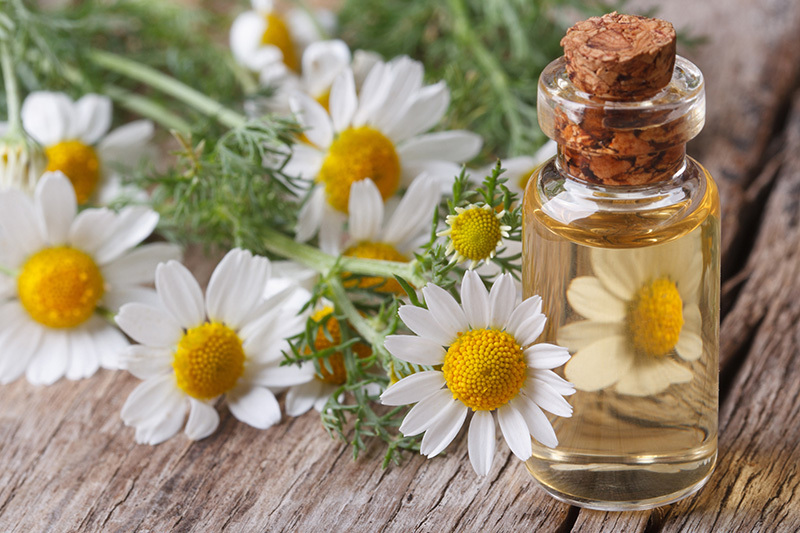Your Ultimate Handbook for Orchid Care Excellence
Posted on 18/08/2025
Your Ultimate Handbook for Orchid Care Excellence
Unlocking the secrets to vibrant, blooming orchids isn't just for expert botanists. Whether you are a novice plant lover or a seasoned gardener, achieving orchid care excellence is within your reach. Read on to discover everything you need to know to help your orchids not only survive but truly thrive!
Understanding Orchids: An Introduction
Orchids are one of the most diverse and breathtaking species in the plant kingdom. With over 25,000 varieties and countless hybrids, these plants boast unique blooms and fascinating adaptations. This guide is designed to offer comprehensive, easy-to-understand advice on mastering orchid care for consistently healthy and beautiful plants.
Why Orchids Captivate Gardeners Worldwide
- Exceptional Diversity: From the elegant Phalaenopsis to the showy Cattleya, orchids cater to every personal taste.
- Striking Blooms: Orchids produce vibrant, long-lasting flowers unmatched by other houseplants.
- Symbolism: Orchids symbolize love, luxury, beauty, and strength across cultures.

Choosing the Right Orchid Species for Your Home
Success in orchid care starts with picking the right species for your environment and experience level. Not all orchids require the same attention, so choosing a compatible variety is crucial for ongoing success.
Popular and Beginner-Friendly Orchids
- Phalaenopsis (Moth Orchids): These are ideal for beginners. They thrive in indoor environments with indirect sunlight.
- Dendrobium: Enjoys bright, filtered light and can tolerate a range of temperatures.
- Cattleya: Known for their large, fragrant blooms and require brighter indoor light.
- Oncidium: Easily recognized by their "dancing lady" flowers and require good air circulation and light.
The Fundamentals of Orchid Care Excellence
1. Light: Setting the Stage for Growth
Like all plants, orchids rely on optimal light conditions to fuel their growth and display those signature exotic blooms.
- Indirect sunlight is best. Too much direct sun will scorch the leaves.
- East or west-facing windows are ideal for most indoor species.
- Signs of inadequate light include limp, dark green leaves and minimal blooms.
- Yellow, bleached leaves are a signal of excess light--move your orchid farther from the window or use a sheer curtain.
2. Watering Orchids the Right Way
Orchid watering is often misunderstood. Overwatering is the number one killer of household orchids.
- Water once a week for most species during active growth, and reduce frequency in dormancy periods.
- Always ensure excellent drainage--never let roots sit in water.
- Water early in the day to allow roots to dry out, preventing rot and infection.
- Use lukewarm, filtered water when possible--hard tap water can deposit minerals that damage sensitive roots.
Tip: Feel the potting medium: if it's dry about an inch below the surface, it's time to water.
3. Humidity: Mimicking the Orchid's Natural Habitat
Orchids originate from humid, tropical environments. Maintaining the right humidity level is critical for orchid care success.
- Optimal humidity levels range from 40% to 60% for most orchids.
- Use humidity trays or a room humidifier to maintain consistent moisture in the air.
- Group orchids together to create a microclimate of higher humidity around your plants.
Persistent dry air can lead to shriveled leaves and premature flower drop.
4. Temperature: Achieving the Ideal Range
Understanding your orchid's temperature preferences is crucial for seasonal growth and year-round orchid care excellence.
- Temperatures at night should be slightly lower than daytime--generally 65-75?F (18-24?C) by day, and 55-65?F (13-18?C) at night.
- Avoid placing orchids near drafts, vents, or heat sources that can stress the plant.
- Certain species (like Cymbidium or Miltonia) need cooler conditions, so be sure to check specific requirements.
5. Feeding and Fertilizing Orchids
Just like other plants, orchids benefit from periodic feeding for robust growth and flower production.
- Use a specifically formulated orchid fertilizer (20-20-20 or similar blend), diluted to half strength.
- Fertilize every 2-4 weeks during active growth and reduce frequency when the plant is not flowering.
- "Weakly, weekly" is a popular approach--feed with a dilute solution often, rather than rarely with full-strength fertilizer.
Important: Always water the orchid before fertilizing to avoid burning the delicate roots.
The Perfect Orchid Potting Mix
Unlike most houseplants, orchids require a specialized potting medium that allows optimal airflow and drainage.
Components of a Superior Orchid Mix
- Bark chips (fir or pine): Excellent aeration and fast drainage.
- Sphagnum moss: Retains moisture while keeping roots ventilated.
- Perlite or charcoal: Further improves drainage and prevents compaction.
Always repot orchids every 1-2 years, especially if the mix has broken down or roots appear crowded and unhealthy.
Mastering Orchid Repotting
When and How to Repot Orchids
- Best repotted after blooming, when new roots and shoots appear.
- Gently remove old medium and trim away dead or mushy roots with sterilized scissors.
- Place the orchid in the center of the new pot, spreading roots over the bark or sphagnum base.
Choosing a clear plastic pot can help you monitor root health and moisture levels more easily.
Orchid Pruning and Maintenance Tips
How to Prune and Deadhead Orchids
- After blooms fall, trim the flower spike above the node closest to the base for potential reblooming.
- Remove yellow or damaged leaves and any spent flower stalks for overall plant health.
Sharp, sterilized tools help prevent the spread of infection.
Solving Common Orchid Problems
Typical Orchid Care Challenges and Solutions
- Bloom Drop: Frequently caused by abrupt environmental changes. Maintain stable temperature and humidity.
- Yellowing Leaves: Can indicate overwatering, underfeeding, or insufficient light.
- Root Rot: Often a result of poor drainage or overwatering. Repot in fresh, well-draining mix.
- Pests (like spider mites or scale): Wipe leaves with soapy water and increase air circulation.
Quick fixes and careful observation can usually get your orchid back on track. For persistent issues, consult gardening forums or a local horticulturist.
Encouraging Orchid Reblooming
One of the pinnacles of orchid care excellence is getting your plant to flower again, season after season. Here's how to coax out those spectacular blooms:
- Boost light slightly during the post-bloom and growth periods. Consider supplementing with grow lights in winter.
- Drop nighttime temperatures by 10 degrees Fahrenheit for a few weeks to mimic seasonal cues.
- Maintain a steady "feed and rest" cycle using orchid fertilizer during active growth.
- Allow sufficient humidity and consistent watering--but avoid soggy roots.
Most orchids need a rest period after blooming--avoid fertilizing too heavily during this time and keep an eye on signs of new spikes emerging.
Long-Term Orchid Health and Grooming
Advanced Orchid Care Techniques
- Leaf Cleaning: Gently wipe dust from leaves with a damp cloth to maximize photosynthesis.
- Air Circulation: Use a small fan to deter pests and fungus; ensure orchards have some space between pots.
- Monitor for pests like mealybugs and scale insects, especially if you're growing orchids in a greenhouse environment.
Propagation and Division
- When your orchid becomes too large for its pot, divide healthy clumps with at least 3-4 healthy pseudobulbs for each new division.
- Keikis (baby shoots) can be detached when several roots form, and planted in a new potting medium.
Propagation is rewarding, giving you new plants and helping you expand your blooming orchid collection.

Frequently Asked Questions (FAQs) About Orchid Care
How often should I water my orchid?
Generally, orchids require watering once a week, but always check the moisture level an inch below the surface. Overwatering is riskier than underwatering!
Why are my orchid's leaves turning yellow?
This usually signals a problem with watering (too much or too little) or insufficient light. Adjust your care routine and remove any severely yellowed leaves.
How do I get my orchid to rebloom?
Keep up with consistent orchid care, maintain proper light and temperature drops at night, and fertilize during active growth periods. Patience is key!
How can I increase humidity for my orchid?
Use a humidity tray, group orchids together, or employ a room humidifier. Misting orchids is less effective and can promote fungal disease.
Conclusion: Excel at Orchid Care Today
Orchid care excellence is not an unattainable dream--it requires understanding your plant's specific needs and responding with consistency and observation. Select the right species, provide optimal light, thoughtful watering, and the correct potting medium, and you'll be rewarded with lush leaves and vibrant blooms. Whether you're cultivating a single prized specimen or an indoor orchid jungle, this ultimate orchid care handbook equips you with all you need for long-term success.
Start your journey to orchid care perfection today! With patience, dedication, and a bit of orchid-specific know-how, your home will soon overflow with the elegance and beauty of thriving orchids.
- Monitor regularly for pests, diseases, and care needs.
- Repot and prune as needed to maintain vigor and vitality.
- Experiment with new orchid species as your confidence grows.
May your orchids flourish and reward your efforts with breathtaking colors year after year!
Latest Posts
Unlocking the Secrets to Thriving Hydrangeas
Your Ultimate Handbook for Orchid Care Excellence
Which Bloom Aligns with the Essence of Who You Are?
A Guide to the Five Most Sought-After Valentine's Day Flowers





